Ladyfish
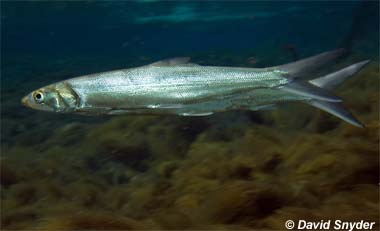
Elops saurus
This long, slender, silvery fish has elongated and pointed fins, including a deeply forked caudal (tail) fin. It grows to 3 feet long and 15 pounds, but although anglers sometimes enjoy catching ladyfish, it’s not considered to be very appealing to eat. Ladyfish are very tolerant of brackish water, and can be found in lagoons and bays as well as several miles out to sea.
Order – Elopiformes
Family – Elopidae
Genus – Elops
Species – saurus
Common Names
Common names in the English language are ladyfish, big-eyed herring, bonefish, bonyfish, fiddler, john, long john, riverfish, silverfish, skipjack, springer, and tenpounder. Other common names include albarana (Portuguese), banane (French), banano (Spanish), bidbid (Tagalog), chiro (Papiamento), elopid (Swedish), elops (Russian), elops zlotawy (Polish), fateixa (Portuguese), fateixa-torpedo (Portuguese), frauenfisch (German), guinée machète (French), hopeakala (Finnish), juruma (Portuguese), karaiwashi (Japanese), lisa francesca (Spanish), macabi (Spanish), malacho (Spanish), matajuelo real (Spanish), piojo (Spanish), saumon (French), taiseiyou-kara-iwashi (Japanese), tienponni (Papiamento), and ubarana (Portuguese) are some of the common names used to refer to this species.
Importance to Humans
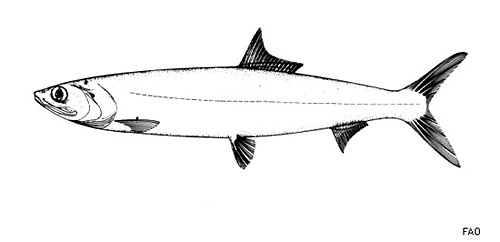
When hooked, the ladyfish yields good sport to the light-tackle angler. This species is known for their behaviors of skipping along the water surface and jumping after being hooked. Although ladyfish is marketed fresh, salted and frozen, it is considered as having little value as food due to the meat being bony and dry. There is no commercial fishery for this fish.
Conservation
The estuaries and coastal mangroves and marshes that are utilized as nursery grounds by larval and juvenile ladyfish are heavily impacted by development activities.
> Check the status of the ladyfish at the IUCN website.
The IUCN is a global union of states, governmental agencies, and non-governmental organizations in a partnership that assesses the conservation status of species.
Geographical Distribution
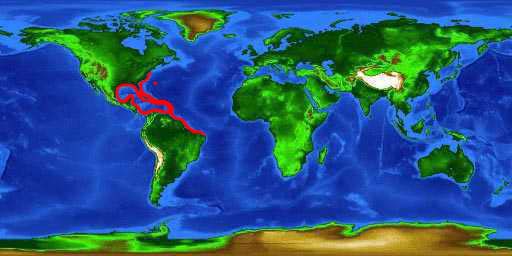
The ladyfish occurs in the western North Atlantic Ocean from Cape Cod, Massachusetts to the Gulf of Mexico and Caribbean Sea, and south to Brazil. The ladyfish is also found in the waters surrounding Bermuda. It is most commonly observed south of North Carolina. The ladyfish has been observed in the western Pacific Ocean and the Indian Ocean.
Habitat
This species is typically found in brackish water lagoons and bays, as well as mangroves, tolerating a wide range of salinities. Occasionally this fish is found several miles offshore. The ladyfish prefers open water areas in channels with moderate currents, and shallow bars and eddies at bends in rivers. It lives to depths of 160 feet (50 m). As a thermophilic fish, the ladyfish has been reported in cold-related fish kills in Florida. It can tolerate low temperatures for short periods of time. Collections of this fish have been successful at temperatures ranging from 52-95°F (11-35°C).
Biology
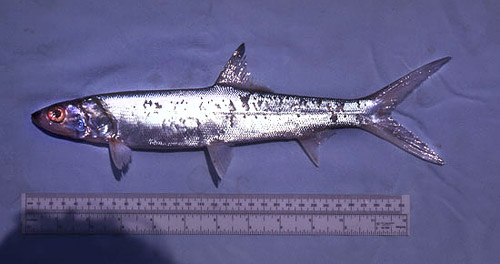
Distinctive Features
It is an elongate, slender, and robust fish with a large, deeply forked caudal fin. The body is rough with small, thin, silvery scales. The lateral line runs straight down the length of the fish. The head of the ladyfish is small and pointed with a large terminal mouth. The caudal lobes of the ladyfish are long and slender.
Coloration
Dorsally, the ladyfish is silvery blue to greenish while ventrally and laterally they appear silver in color. The dorsal and caudal fins are dusky yellowish to silvery and the pectoral and pelvic fins are speckled and pale.
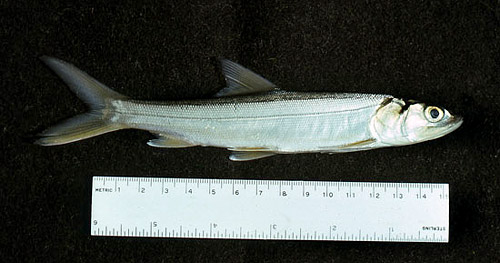
Dentition
As a predatory fish, the ladyfish has small, sharp teeth. The gular plate, a ventral bony plate that is located between the two lower jaws, is narrow.
Size, Age, and Growth
The ladyfish grows to a maximum length of 3 feet (1 m) and weight of about 15 pounds (6.8 kilograms). Length at which sexual maturity is attained is unknown for this species. The ladyfish lives at least 6 years.
Food Habits
Larvae do not forage, but instead absorb nutrients directly from the water. As the larvae grow, they feed primarily on zooplankton as well as insects and small fishes. This is followed by a dietary switch to small fish and crustaceans as the larvae grow into juvenile fish. Adult ladyfish are strictly carnivorous, feeding on small bony fish, including members of its own species, menhaden, and silversides, as well as invertebrates including crustaceans. This fish swallows its prey whole.

Reproduction
Ladyfish spawning occurs in offshore locations throughout the year. Off the coast of Florida, spawning is thought to occur during the fall months. Neither the eggs nor yolk-sac larvae have been described for the ladyfish. The metamorphosing larvae and juveniles have been found inshore in estuarine habitats. However, it is known that the larvae undergo dramatic changes in body form accompanied by two periods of length increase, interspaced with a period of length decrease.
Stage I is the initial period of length increase. The larvae in this stage are characterized by a long, ribbon-like, colorless, transparent body with large fang-like teeth, small head, and very small fins. They lack gills and red blood cells and have a gut that is not open. Oxygen and nutrients for the larvae are absorbed through the skin. The conclusion of Stage I results with the development of the fully formed leptocephalus larvae. Maximum length is about 40-45mm during Stage I. During Stage II, the larvae decrease markedly in length and gradually lose ribbon-like leptocephalic morphology. Late in State II, and throughout Stage III, the larvae undergo pronounced changes in body, including decreases in body depth, snout length, dorsal and anal fin heights, and pectoral fin size. The larvae shrink to about 18-20mm. Stage III is the second period of length increase that terminates with the beginning of the juvenile stage. At a size of 30-35mm, the larvae metamorphose into juveniles.
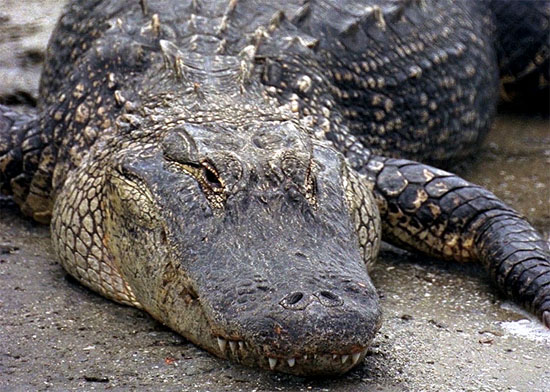
Predators
Larger fish and carnivorous zooplankton may prey upon the ladyfish eggs and juveniles. Adult ladyfish are susceptible to piscivorous birds, sharks, porpoises, and alligators.Parasites
A cestode parasite, Rhynchobothrium bulbifer, has been found in the viscera of the adult ladyfish. Trematodes of the genera Bucephalus and Prosorhynchus have been reported from the intestines of the ladyfish.
Taxonomy
In 1766, Carl Linnaeus first described the ladyfish as Elops saurus. No synonyms have been used for this species. In scientific literature, as well as early popular books on American game fishes, the common name “ladyfish” was given to Albula vulpes. To the modern angler, “ladyfish” means E. saurus while A. vulpes is now referred to as “bonefish”. The genus name, Elops, is derived from the Greek “ellops” translated as a kind of serpent while the species name is derived from the Greek “sauros” meaning lizard.
Prepared by: Cathleen Bester